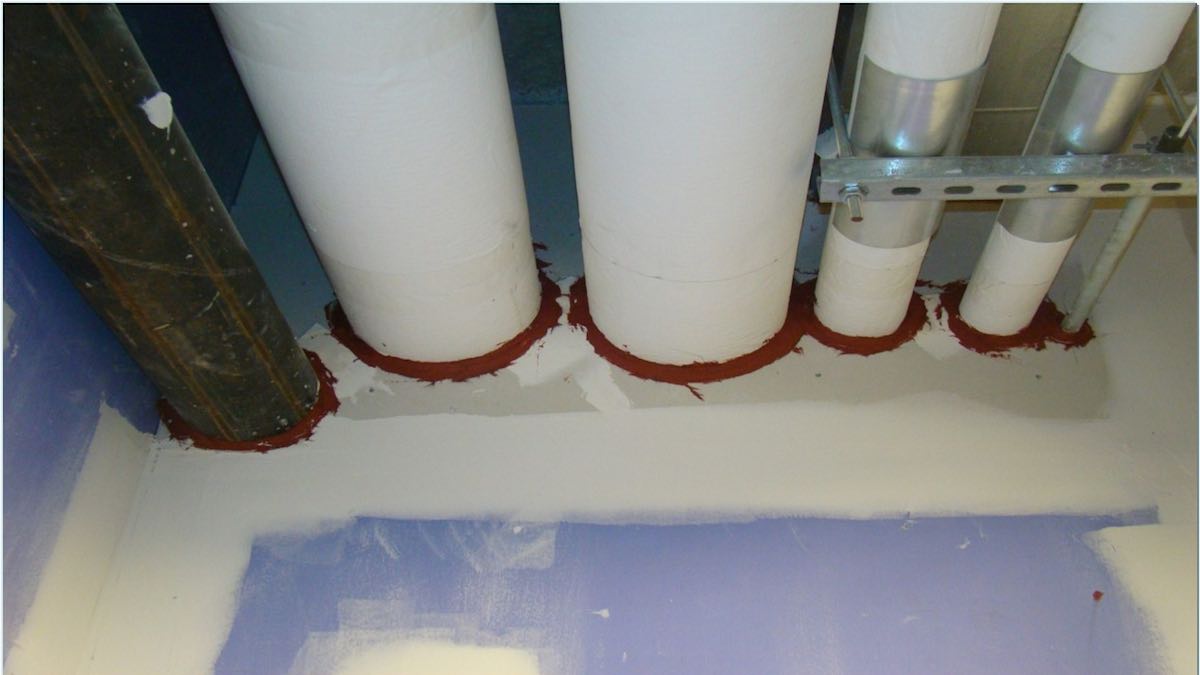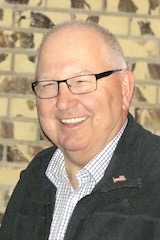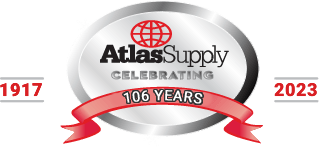
Over the last 33 plus years of selling firestop, I have heard firestop described in many ways. Some of these descriptions are unrepeatable, others nonsensical. This is the first in a series of articles clarifying what firestop is, its installation techniques, firestop project examples, what ‘UL® Tested Assembly’ means and basic terms used in the fire protection field.
Firestop Is Not Fireproofing
Fireproofing is typically the cementitious spray-on material you often see on the underside of steel fluted decks in multistory buildings. You might see fireproofing sprayed onto steel I-beams and structural support columns. It typically is grayish in color and has a rough texture. Other types of fireproofing can be white and look fluffy. New technologies recently have produced spray-on fireproofing in the form of intumescent paint, that expands when heated. These types of fireproofing protect steel structures by insulating them from a high temperature fire, thus preventing the steel from warping, preserving its shape and strength.
Specific Definitions for Firestop Through Penetrations and Joints
When we erect a building, there are national, state and local building codes that we need to follow. Almost all buildings have fire-rated wall and floor assemblies. These fire ratings range from 1, 2, 3 to 4 hours. That simply means that if a fire were to start on one side of the wall or floor, it will take the rated time to burn through the wall or floor assembly. Different buildings have different fire ratings, depending on their use.
Once we install these fire-rated walls and floors, we begin adding amenities like electricity, potable water, HVAC systems and cabling for telecommunications/Internet access. Adding these amenities requires us to make holes in our perfectly made, fire-rated walls and floors.
As soon as we make any size opening in a rated wall or floor, it is No Longer Fire-Rated!
Firestop Materials Installation and Testing
This is where firestop materials enter the story. Firestops are installed around pipes, HVAC ducts, cables, etc. to bring a wall or floor back up to its original fire rating. These ‘Approved Methods’ meet the testing criteria of ASTM E814 – 13a(2017) Standard Test Method for Fire Tests of Penetration Firestop Systems. All firestop manufacturers must adhere to these criteria for testing their materials with specific penetrations, at a third-party laboratory, such as UL. A variety of sealant, devices and fasteners are used along with other materials such as Rockwool™ (also known as mineral wool or stone wool) insulation and backer rod.
The amount/depth of material or a combination of sealant/devices used depends on physical factors including:
- Hour rating
- Size of the opening
- Annular space around the penetration
- Size and type of the penetration.
Once installed in the lab, each penetration is put to the fire test. If the penetration passes, it is listed in the UL or third-party directory as an ‘Approved System’.
This is guidance architects and contractors use to specify and install the firestopping systems on their construction projects.
Construction Planning and Installation
Architects planning a new construction project have many fireproofing versus firestopping trade-offs. Contractors installing fireproofing and firestopping systems have specific questions under varying structural and environment conditions. Architects and contractors alike are welcome to consult Atlas Supply’s fire protection experts at 1-800-347-5767, whatever the phase of construction, whatever the questions might be. Call now!
Citations
- 3M Fire Protection Products
- ASTM E814 – 13a(2017) Standard Test Method for Fire Tests of Penetration Firestop Systems
- Expansion Joint Systems, Joint Fillers (especially backer rod)
Doug McNutt, Firestop Specialist



